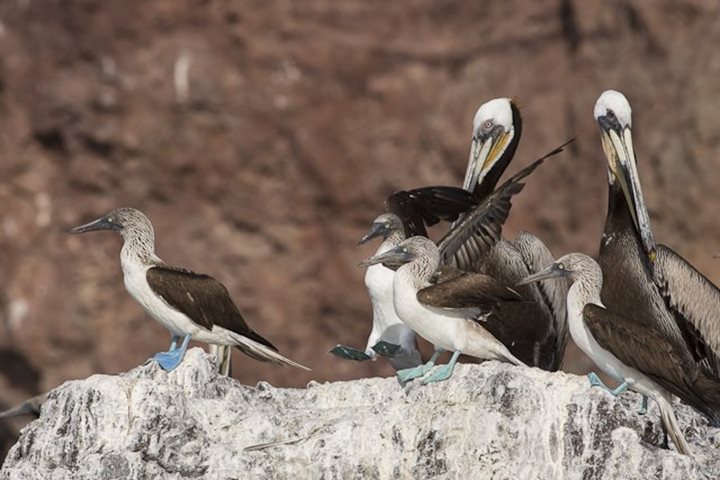A full moon was setting in the west as the sun broke the horizon and we turned into Magdalena Bay. Everyone felt the need for exercise after our days at San Ignacio Lagoon, so soon after breakfast we landed our expedition craft on a section of beach called Punta Belcher. This point was once a whaling station, but none of the remains of that grisly time remain. Now large concrete columns stand like ghosts from an abandoned pier. This location is perfect for structures built by fishermen for shelter during temporary stays. Walls were made of sheets of plastic, tarpaper, cloth, and plywood and were covered by roofs of corrugated and galvanized metal. These were practical accommodations to keep fishermen dry and out of the wind. One place had an incongruous light blue satellite dish.
Shells of all colors and shapes lay scattered along the beach. Small ghost crabs hurriedly scurried off as we passed. Numerous shark tails revealed the livelihood of many of these fishermen. At least a hundred terns rested on a sandy point crowded close together facing into the wind. There were also hundreds of western, Heermann’s, and California gulls flying near the ramshackle buildings. From a photographic perspective there were thousands of astonishing images to capture. There were shacks for the more anthropologic types and an endless variety of half-covered, broken, and perfectly intact shells with a hundred graceful shapes.
During lunch we cruised out through La Entrada and turned south into the Pacific with gentle swells behind us as we made our way towards Land’s End at the tip of the peninsula. Black-vented and pink-footed shearwaters used the air pushed by waves to get their lift. Red-necked phalaropes passed in flocks of 50 or so, and a very dark peregrine falcon flew by thrilling at least 20 of our guests. Later in the day a minke whale breached several times showing its sharply pointed rostrum, white belly, and ventral groves. We don’t see minkes often, so for some of us it was one of the thrill of the day. Our ship continued south, pushed along with the four-foot, white-capped seas that later rocked us to sleep.







